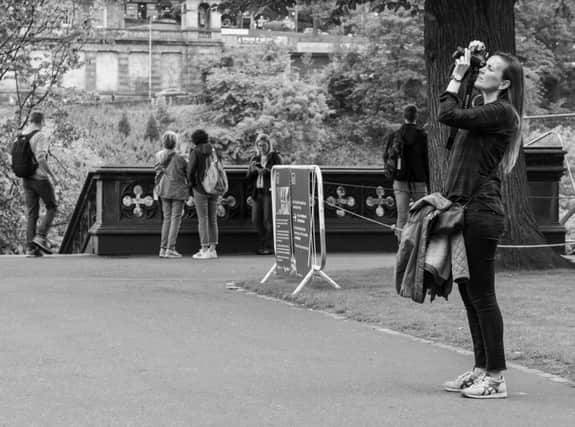Camera Club: Experience the joy of learning


Give either a pencil and paper and they will doodle for a few moments and what they produce could be hung on the wall. It is a rare talent that carries over to their photography.
If we are not naturally artistic, we can learn. For most of us, the art of photography is something that needs learning. Composing a picture and telling a worthwhile story with a photo are hard-earned skills that may take years of training and practising. Like all art, it is an endless learning process; there is always more to discover. Perhaps the technical aspects of photography don’t come easily to you, but you can learn those too. Learning is one of the joys of mastering any art.
Advertisement
Hide AdAdvertisement
Hide AdHenri Cartier-Bresson famously said that our first ten thousand photos are our worst. Had he been alive in the digital age, he would have increased that by an order of magnitude to one hundred thousand. Today, many people shoot with no thought to the image they are producing. There is nothing wrong with this of course. Some people don’t want to learn photography. I know folk who are happy to go out with their camera set to automatic and just shoot what they see. There is a lot of joy to be had from just raising a camera to your eye and grabbing the shot. Furthermore, the clever technicians who designed your camera included settings that do the technical work for you. But I do think they are missing out on something special: the joy of learning.
There are so many good opportunities to learn and different learning methods suit different people. Some choose the academic route through university, others follow NVQs that are aimed at starting people on the road to employment. There are online courses too. Be careful, some are good, but they do vary in quality and some of their so-called qualifications are worthless. Many more choose to come along on courses that professional photographers run. I am grateful that plenty choose this method as it earns my bread and butter.
Many hobbyist photographers consider themselves to be self-taught. But that is a misnomer. We all learn from one source or another. Some read books or blogs, others follow YouTube videos. However, learning in an unstructured way can lead to gaps in knowledge. We risk not knowing what we don’t know. If it were a truly effective method, then we would not have schools or universities and students would be stuck watching videos online instead.
No learning style suits all. Most people choose a combination of training methods. Those who come on my courses also read books and watch YouTube videos. Some of them are also studying degrees in photography.
Advertisement
Hide AdAdvertisement
Hide AdI was involved in running leadership training courses some years ago and taught outdoor activities. We had an adage: what I hear I forget, what I see I remember, what I do I know. Whichever training route we choose, we only learn by doing. When you have studied any aspect of photography, consolidate that learning by getting out with your camera and taking photos. Consciously put that lesson into practice.
When you have caught the learning bug, you will want to know more. The more you learn, the more you will realise how little you know, which is great because that means there is more yet to discover.